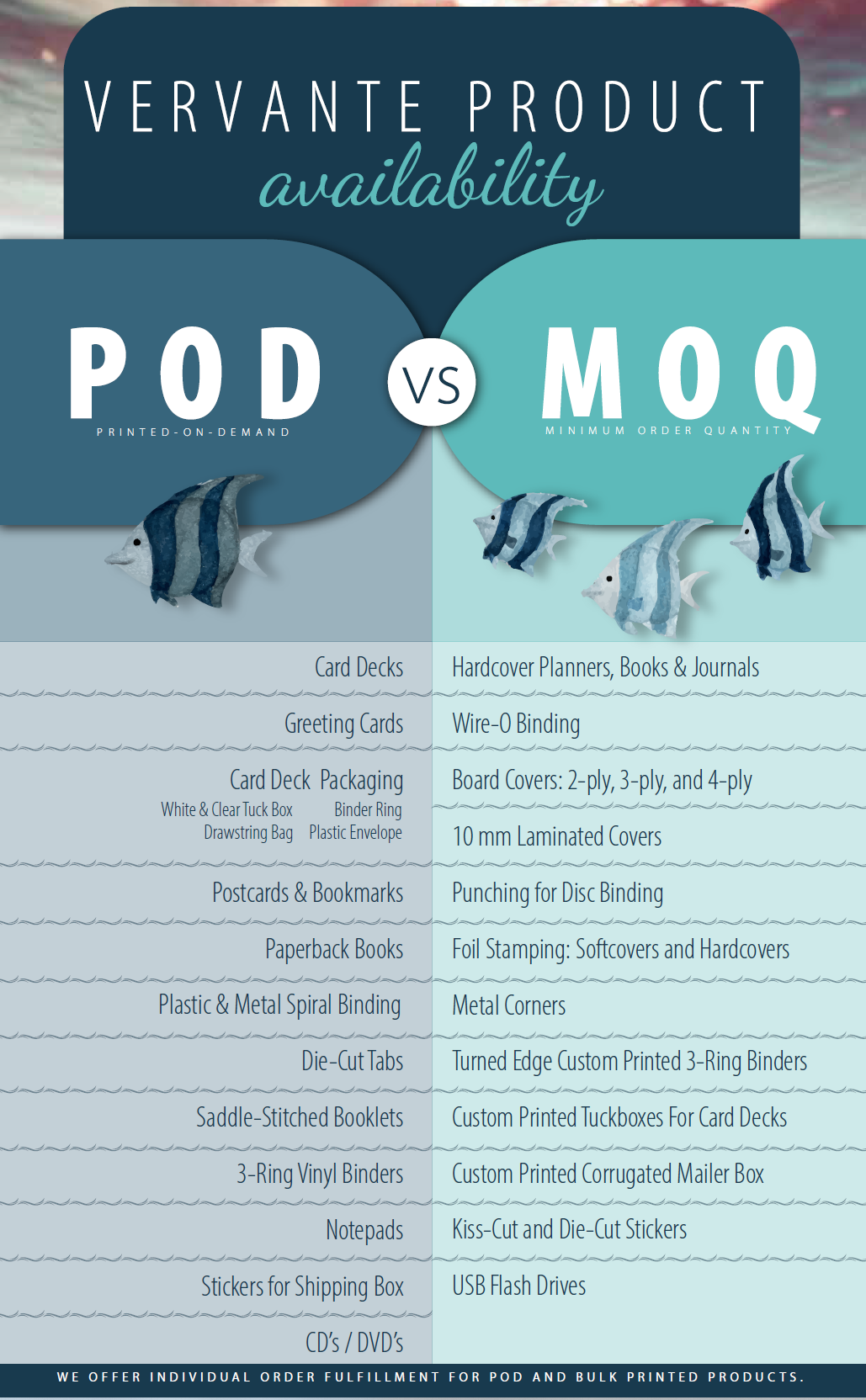Part 4: How to Print and Publish Your New Product
by Vervante •
 Welcome to the next step in our special 5-part series, as we walk you through the process of creating a new product from start to finish. In Part 1, 2 and 3, we discussed getting started, setting up your product and the importance of design and all the little details that come with it. Now we're ready to talk about one of the most exciting steps - printing and publishing your new product!
Welcome to the next step in our special 5-part series, as we walk you through the process of creating a new product from start to finish. In Part 1, 2 and 3, we discussed getting started, setting up your product and the importance of design and all the little details that come with it. Now we're ready to talk about one of the most exciting steps - printing and publishing your new product!
First step: Order a sample copy
Your design looks great on your computer screen - now it's time to make sure it looks just as nice in real life by ordering a sample copy. Do not skip this step! Printing a single copy of your book or product is important to confirm that the appearance and quality are what you want them to be.
If your final product includes a cover or binding option that we don’t offer on demand, we recommend at least a softcover proof before you order a bulk order. Softcover proofs can generally be printed in 5-7 days. We also offer a hardcover proof option that will be exactly like the final product. This option can take 4 weeks to produce.
To order samples, upload print-ready pdfs to your author account. Our team will review your files and add the product to your account so you can place an order through your author dashboard. Or you can contact us at [email protected] for assistance.
Next: Consider author imprinting
Some authors use our services to self-publish one book. But most end up creating multiple books and products. This is the time to consider imprinting. A publishing imprint is the name assigned to an ISBN. It will be the name listed as publisher on your book copyright or imprint page, on the back cover of your book, and in retail descriptions such as Amazon.
Authors who publish their works under a publishing imprint set themselves apart from other self-published authors who have no imprint and are publishing under their own names. Having your book listed with a publisher name that is different than your own creates a level of professionalism that can overcome bias that many still have against self-publishing. Read more here about the benefits and how to set up your own publishing imprint: Why self-published authors should consider imprinting.
Set a price for sales
Once you’re ready to sell, the next step is something a lot of people really struggle with – setting a price. It’s like a scary math problem where the answer isn’t always clear. Price it too high and no one will buy. Price it too low and you devalue your work and your profits. Finding the right price doesn’t have to feel like a guessing game, though, especially if you follow the tips we provide in this article: "How to price your book or product for retail sales."
A very common question we hear is how to much should I charge? A couple of things to remember when determining your retail price:
- Your product is unique, custom and printed in small batches.
- You are not appealing to a broad audience but rather a niche group that will find value in the product you’ve created.
- You cannot compete with pricing for products mass produced in China.
- Your product is valuable and will provide your customers with a unique solution.
- We recommend that you double your cost (or more) to determine the retail price.
Decide if you want to add extras
You're ready to launch your book, planner or other type of product, yay! This is a good time to take a pause and consider if you want to create any extras that will help you launch or promote your product. Stickers, coloring books, bookmarks... these and more are fun items that are easy to create, budget-friendly, and can be great for adding value to your product and pizzazz to your launch. Check out these articles for inspiration:
- Ideas for products that complement your book
- How to create a coloring book
 How to turn daily planners into collections
How to turn daily planners into collections- A fun way to add extras to packages
FREE RESOURCES
Our Help Page offers a variety of free resources including product videos and guides on everything from design to step-by-step instructions. Below are links for guides and useful blog articles for more information about what we've discussed above:
- Book Publishing Checklist
- What is the Difference Between POD and MOQ?
- How to Create a Publishing Imprint
- How to Set a Price for Retail Sales
In the next article, we will take the next big step - listing your book for sale online, all about Amazon, and other details such as fulfillment, shipping, royalties, and more.
Links to Full Series
- Article #1: Getting Started
- Article #2: Creating Your New Product
- Article #3: Design and Print Files
- Article #4: Publishing & Printing (this article)
- Article #5: How to Share & Sell